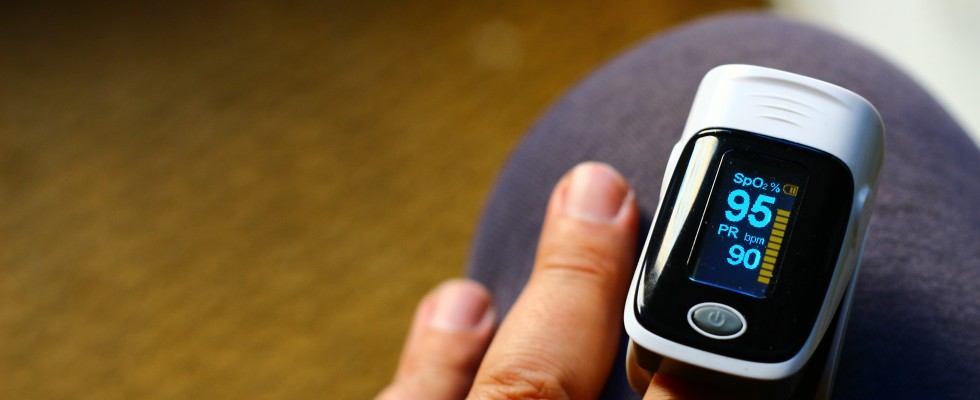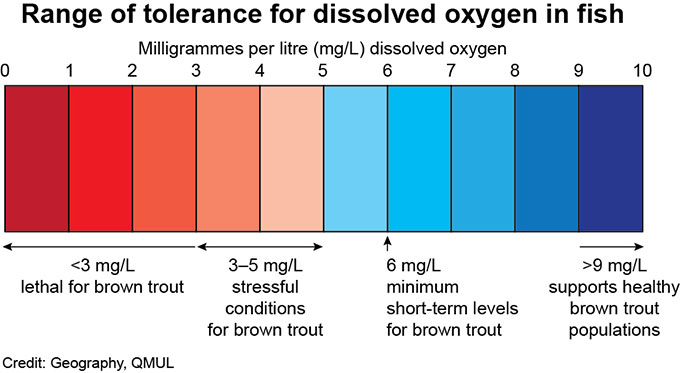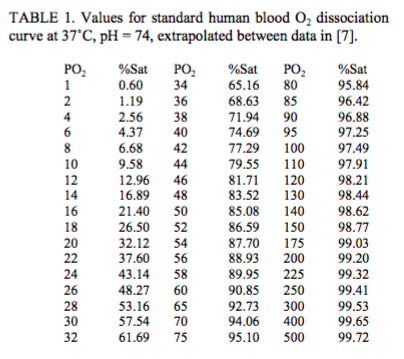MILE HIGH TRAINING ALTITUDE TO OXYGEN CHART
This oxygen to altitude chart extrapolates the amount of oxygen (as a percentage) to real altitude.
A normal arterial blood oxygen level typically falls between 75 and 100 mmHg. Your blood carbon dioxide level and pH - a measure of acidity or alkalinity - are usually measured along with the. Normal arterial blood oxygen levels as measured by an arterial blood gas range from 75 to 100 millimeters of mercury (mm Hg), which is a measurement of the amount of oxygen that is dissolved in the arterial blood. According to the Mayo Clinic, values under 60 mm Hg usually indicate that a person needs supplemental oxygen.
At real altitude (in the mountains), the barometric pressure of the atmosphere is much lower than sea-level environments. The result is that oxygen molecules are spread further apart, lowering the oxygen content of each breath. As a result, the reduced availability of oxygen in the air reduces the blood oxygen saturation in the body. As the percentage of oxygen in the body goes down, the body struggles to efficiently deliver oxygen to tissues, muscles and the brain. If you’re interested in altitude as it relates to air pressure, please check out this link: https://baillielab.net/critical_care/air_pressure/


This is the main reason why people traveling from sea-level often feel symptoms of altitude sickness for the first week upon arriving at higher elevations. This desaturation of oxygen is what leads people to experience Acute Mountain Sickness (AMS), and at its extreme, cerebral and pulmonary edema. To avoid these negative experiences at altitude, we recommend utilizing a “pre-acclimatization” strategy to prepare for high altitude exposure. In an ideal world, we recommend clients utilize all three forms of simulated altitude training — sleeping at altitude, exercising at altitude, and a stationary breathing protocol called Intermittent Hypoxic Breathing

The change in barometric pressure at real altitude is called “hypobaric hypoxia.” At Mile High Training, instead of changing the barometric pressure of an environment, we decrease the oxygen percentage of the air available to replicate the de-saturation that happens at high elevations. Removing oxygen but maintaining normal atmospheric pressure is called “normobaric hypoxia.” By controlling the percentage of oxygen in each breath, users can de-saturate and elicit the adaptations that have been proven to enhance performance and increase acclimatization to altitude. Again, this desaturation of oxygen from the blood and brain is what kicks on the adaptive response in the body, and by incrementally introducing the stimulus, users at sea-level can arrive at real altitude with little to no ill-effects. Our chart will help you find the oxygen levels by elevation for many common altitudes.
Below is an altitude oxygen chart that extrapolates oxygen percentages to real altitude, which you can use in conjunction with our high altitude tents and mask-based training systems. Please feel free to reach out to us for a consultation if you have questions about the true altitude you are simulating. And if you’d like to
Download and save your own copy of the Mile High Training altitude to oxygen chart.
You can also download the altitude to oxygen chart in an excel format where you can input your current elevation to get the corresponding percentages for your elevation.
Mile High Training ALTITUDE TO OXYGEN CHART
The elevation related to the oxygen percentage.
| Sea Level | Sea Level | 20.9% | 20.9% | HQ - Catskills, NY |
| 1,000 | 304 | 20.1% | 20.1% | |
| 2,000 | 609 | 19.4% | 19.4% | |
| 3,000 | 914 | 18.6% | 18.6% | Chamonix, France (3,264 ft. - 995m) |
| 4,000 | 1219 | 17.9% | 17.9% | Salt Lake City, UT (4,226 ft. - 1288m) |
| 5,000 | 1524 | 17.3% | 17.3% | Boulder, CO (5,430 ft. - 1655m) |
| 6,000 | 1828 | 16.6% | 16.6% | Stanley, ID (6,253 ft. - 1906m) |
| 7,000 | 2133 | 16% | 16% | Flagstaff, AZ (6,910 - 2106m) |
| 8,000 | 2438 | 15.4% | 15.4% | Aspen, CO (7,907 ft. - 2410m) |
| 9,000 | 2743 | 14.8% | 14.8% | |
| 10,000 | 3048 | 14.3% | 14.3% | Leadville, CO (10,200 ft. - 3109m) |
| 11,000 | 3352 | 13.7% | 13.7% | Cusco, Peru (11,152ft – 3399 m) |
| 12,000 | 3657 | 13.2% | 13.2% | La Paz, Bolivia (11,942 ft. - 3640m) |
| 13,000 | 3962 | 12.7% | 12.7% | |
| 14,000 | 4267 | 12.3% | 12.3% | Pikes Peak, CO (14,115 ft. - 4302m) |
| 15,000 | 4572 | 11.8% | 11.8% | Mount Rainier (14,411 ft. - 4392m) |
| 16,000 | 4876 | 11.4% | 11.4% | |
| 17,000 | 5181 | 11% | 11% | Everest Base Camp (16,900 ft. - 5150m) |
| 18,000 | 5486 | 10.5% | 10.5% | |
| 19,000 | 5791 | 10.1% | 10.1% | Mt. Kilimanjaro (19,341 ft. - 5895m) |
| 20,000 | 6096 | 9.7% | 9.7% | Mt. Denali (20,310 ft. - 6190m) |
| 21,000 | 6400 | 9.4% | 9.4% | E-100 Altitude Generator Max |
| 22,000 | 6705 | 9% | 9% | |
| 23,000 | 7010 | 8.7% | 8.7% | Aconcagua (22,841 ft. - 6960m) |
| 24,000 | 7315 | 8.4% | 8.4% | |
| 25,000 | 7620 | 8.1% | 8.1% | |
| 26,000 | 7924 | 7.8% | 7.8% | |
| 27,000 | 8229 | 7.5% | 7.5% | Cho Oyu (26,864 ft. - 8188m) |
| 28,000 | 8534 | 7.2% | 7.2% | K2 (28,251 ft. - 8611m) |
| 29,000 | 8839 | 6.9% | 6.9% | Mt. Everest (29,029 ft. - 8848m) |
| 30,000 | 9144 | 6.3% | 6.3% | Elevate High Flow Max |
When it comes to your blood oxygen level, a second-look can never hurt.
Let’s be frank: if you’re currently living with a chronic lung disease like chronic obstructive pulmonary disease (COPD), pulmonary fibrosis (PF) or emphysema, the maintenance of your health and symptom expression is generally your top priority. Often, this can mean a particular level of scrutiny in the foods you eat, the exercise you get, your exposure to cigarette smoke and other harmful airborne conditions, and the continual maintenance of your respiratory metrics, such as your PFT and blood oxygen levels.
Simply put, for those with lung disease, it’s not only incredibly important to monitor your health and make adjustments in your behavior when necessary, but for many, it’s a way of life. Your blood oxygen level is one of the most important metrics to measure; as it is a clear indicator of how well your body is distributing oxygen (more on that in a moment). Taking the time to determine your blood oxygen level and how it fits in with the national average can be a vital marker for the direction of your respiratory health.
With your health in mind, the Lung Health Institute is here to break down the things you need to know on your Blood Oxygen Level: Is My Oxygen Level Normal?
What is Your Blood Oxygen Level?
In the most basic terms, your blood oxygen level is the amount of oxygen in your blood. Sounds simple, right? However, the complexities of this measurement come into play when trying to increase this amount by doing more than taking deeper breaths. As you can imagine, the level of your blood oxygen is important for your general health. If your blood oxygen is too low—in comparison to the average blood oxygen level of a healthy adult—you may be hypoxemic.
As is the case of most people with COPD, oxygen levels are below normal and hypoxemia can frequently occur over time. This means that your body has trouble nourishing your cells, tissues and organs. As your blood is the medium for getting oxygen (via red blood cells) throughout your body, poor circulation can produce the symptoms of chronic lung disease—namely shortness of breath.
Good O2 Level
Overall, this can reduce your quality of life, impair your skeletal muscle function, impair your exercise tolerance and increase your risk of death.
How is Your Blood Oxygen Level Measured?
A normal blood oxygen level typically ranges from 75 to 100 mm Hg. In the case of dangerously low blood oxygen, the level that requires supplemental oxygen is anything under 60.
The best way to monitor blood oxygen levels is through your arterial blood gasses (ABGs); however, this can be difficult to do at home. In place of using an ABG test, it’s more convenient to use a pulse oximeter, which measures oxygen saturation through a small clip on your finger. In the realm of oxygen saturation levels, normal is often considered anything between 95-100 percent.
Oxygen Levels Chart
Anything below 90 is usually considered low, therefore if you are below this metric, you should consider asking your doctor for a prescription for supplemental oxygen.
What Does My Blood Oxygen Level Mean for My Health?

Your blood oxygen levels have a direct effect on the expression of your symptoms. A low blood oxygen level can signify a lack of proper circulation or oxygen saturation within the body, which can ultimately result in a variety of conditions typically associated with chronic lung disease.
These may include:
- Confusion
- A sense of euphoria
- Restlessness
- Headaches
- Shortness of breath
- Rapid breathing
- Dizziness, lightheartedness and/or fainting spells
- Lack of coordination
- Rapid heart rate
- Elevated blood pressure
- Visual disturbances
- Bluish tint to lips, earlobes and/or nail beds
- Elevated red blood cell count or polycythemia
What Can I Do Moving Forward?
Understanding your blood oxygen levels is a key step in learning how to measure your health. Whether it’s through measuring it yourself using a pulse oximeter, or having it properly tested through an ABG test with your primary physician, knowing the basic metrics of your respiratory health is critical to making the changes necessary to improve it.
Although the most important step in taking control of your health is to quit smoking, a close second is to address your general health through diet and exercise.
95 Percent Oxygen Saturation
With these behavioral changes, it’s possible to greatly affect the pronouncement of symptoms for people with COPD, pulmonary fibrosis and emphysema. However, when lifestyle changes fail to improve your quality of life in the way that you may expect, it may be time to consider cellular therapy. Rather than addressing the symptoms of lung disease, cellular therapy may directly affect disease progression and may improve quality of life.
For more information on cellular therapy and what it could mean for your life moving forward, contact us today or call us at 888-745-6697. Our patient coordinators will walk you through our available treatment options, talk through your current health and medical history and determine a qualifying treatment plan that works best for you.
Is 93 A Good O2 Level
Interested in our article on Blood Oxygen Level: Is My Oxygen Level Normal? Share your thoughts and comments below.


